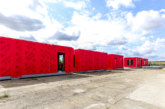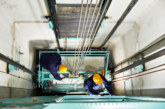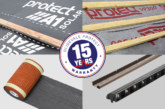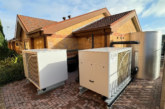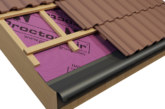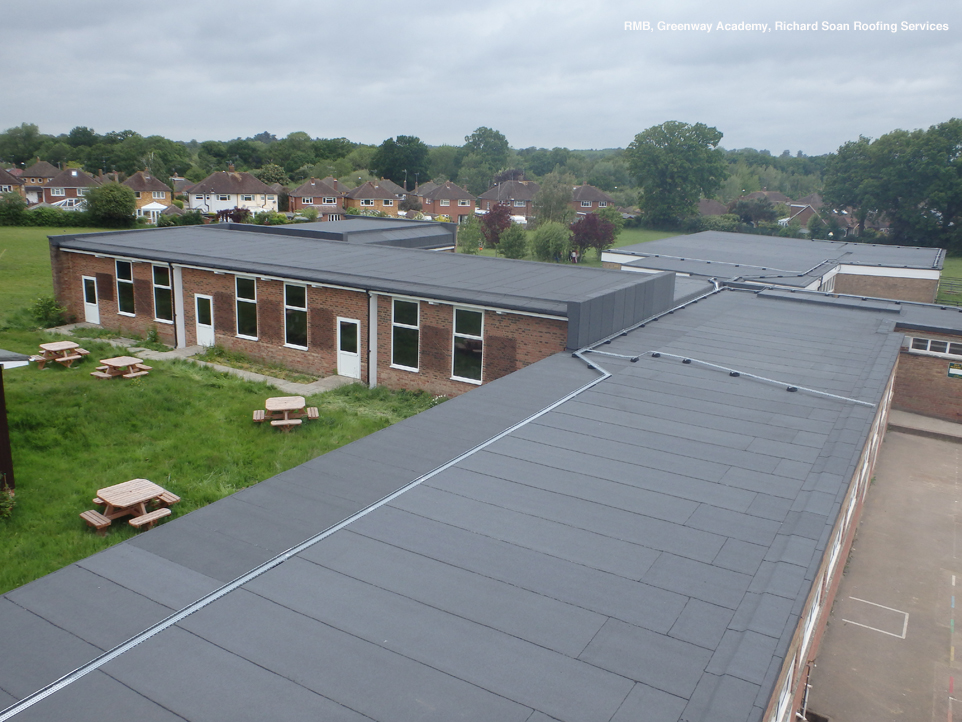
Ian Dryden, specification business development manager at SIG Roofing, offers advice on combating Interstitial Condensation on existing flat roofs in schools.
Many of our post-war schools were built with a number of flat roof areas, as opposed to traditional pitched roofs. Correctly installed flat roofs will often last decades, however they still require maintenance and attention to prevent water ingress and leaks occurring. Without adequate maintenance, schools can face large bills for replacement and possible damage to the interior as a result of leaks.
Spotting roofing problems early can save a fortune, but what if the school’s roof appears to be leaking but no actual leak can be found? The chances are that the leaking roof is down to Interstitial Condensation — an increasing problem particularly for schools with flat roofs built in the 1980s and early 1990s, and for incorrectly refurbished schools.
Condensation is when water vapour condenses into liquid, such as when a cold glass of water meets warm, moist air and droplets of water collect on the surface. ‘Interstitial’ means occupying ‘interstices’ — small gaps or cracks.
Interstitial Condensation occurs within the fabric or roof of a building, at the point (known as the dew point), where the atmospheric temperature of a given concentration of water vapour drops and water droplets begin to condense and dew forms. Different from surface condensation, its occurrence can be difficult to detect without investigation.
Take the case of a Glasgow school that had been leaking for well over 16 years but the leak could never be found. The 3,000m2 flat roof of the 1980s-built school had been constructed with a metal composite panel used as a deck, together with a pre-laminated underlay. Several overlays of new membrane have been applied over the years, each without success. Upon inspection, it was discovered that there was no VCL (Vapour Control Layer) in the construction, and neither was there butyl mastic seal to the laps.
When the roof was designed, the designers may have argued that there was no need for a VCL as the panel was factory bonded, but every lap and penetration through the deck should have been fully sealed with butyl mastic. If there is no control to water vapour travelling through the roof, then it is at risk of Interstitial Condensation.
In this case, there was no way for the water to get into the roof other than condensing out of the water vapour travelling up through it. The roof structure was correctly detailed and the waterproofing was in excellent condition. The costs of misdiagnosis were running high.
Every so often, the school had to replace 30-40m2 of ceiling tiles that were ruined by the leaks. A leaking gutter had been long suspected, and long lengths of gutter had been re-felted to no effect. Indeed, a complete overlay of the roof with an additional membrane only served to increase the vapour resistance of the surface and compounded the condensation problem further.

So, in the event of persistent leaks, how can Interstitial Condensation be detected? Firstly, it’s important to call in specialists such as SIG Roofing. By cutting a core sample — a hole in the roof — the build-up and condition of the layers of roof can be checked. If there is no Vapour Control Layer (VCL), there is a very good chance that Interstitial Condensation may be the cause. If the roof was constructed in the 1980s and early 1990s, it’s likely that the composite sheets were not fully sealed and warm air may be travelling up inside the construction and condensing where it hits the dew point. If there is a ceiling void, especially with a cold roof, it must be ventilated. Without ventilation, warm moist air will condense onto a timber deck and rot the roof from the inside.
It’s also worth noting that current regulations stipulate in Part L 2B — that if more than 25% of the existing waterproofing is being stripped, the whole roof must be brought up to the standard of the current energy related regulations. Practically, this means that if only 25% of the roof is stripped, the whole roof may still need to be upgraded to meet Part L 2B. Meaning that in the areas of the roof that are not stripped, the roof must be guarded against Interstitial Condensation by building up between the new and old insulation areas. Installing a new roof is a luxury that most schools can only dream of.
Refurbishment projects make up 50% of a local authority’s funding under the Government’s Building Schools for the Future (BSF) programme — therefore it’s important that this money is spent wisely and effectively. Interstitial Condensation can be costly, and the last thing that any school wants is to have to line up buckets to catch leaks in the ceiling, or having to teach pupils in temporary classrooms. So, if roof leaks are persistent it pays to seek professional independent advice from specialists who can help diagnose any issues with the roof and also help secure funding from the EFA (Education Funding Agency) to rectify the issue.

